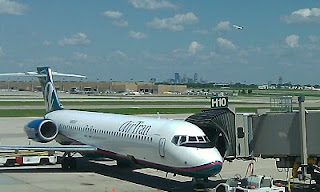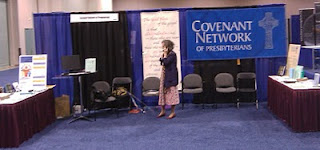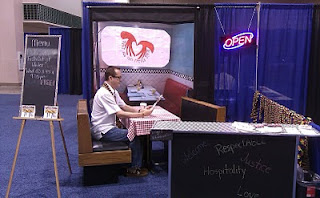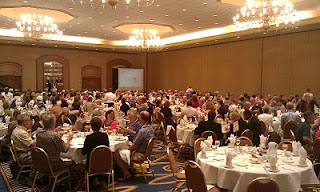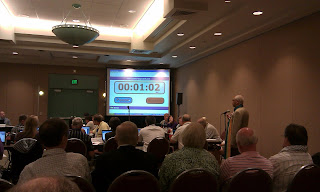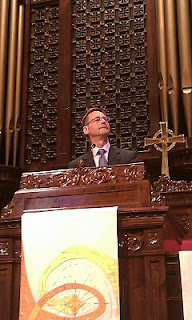Thirteen kayaks and fourteen paddlers departed from the Sebago Canoe Club dock around 10:15 AM. last Monday. The group included the trip leader Tony, as well as Barbara, Benny, Gary, three Johns, Kevin, Laurie, Mary, Nina, Rebecca, Vicki and Vivian.
After a brief paddle toward the mouth of Paerdegat Basin, we rafted up just shy of the Belt Parkway Bridge. When everyone was ready, we paddled under the bridge and into Jamaica Bay, intending to raft up again near buoy 13. Even before we reached that marker, however, one of our group members turned around and headed back to the clubhouse after deciding they did not feel up for the longer and farther paddle.
After the rest of us assembled near buoy 13 (Photo right), we paddled as a tight group across the channel to buoy 12, and then turned west, along the northern shore of Canarsie Pol. About halfway along the northern shoreline of the island, two more paddlers, paddling a tandem, turned back toward the dock, as one of them had an appointment later in the afternoon and was afraid he would not make it back in time if he paddled much farther.
Now down to eleven paddlers in eleven boats, we continued paddling around the northwestern tip of the isle, and being sure to stay a safe distance away from an Osprey nest, we rounded the tip and put in on a sandy and fairly clean beach.
Once we had all extracted ourselves from our boat’s cockpits, we stretched our legs, drank from our water bottles, and shared snacks. Tony offered up sugar-coated donettes. Laurie shared figs, and Mary invited all to partake of some of her trail mix. Restricting ourselves to the beach because of the wildlife management area above the high tide line, our Commadore still managed to collect some trash from this generally clean stretch of sand – three plastic water bottles tied together with polypropylene rope, one bottle still un-opened. Thanks to him we would be leaving this beach even cleaner than we found it.
Vicki and I paddled Wilderness Systems Sealutions. The Sealution is not my favorite club boat I would rather paddle it than some others. My favorite club boat is the Necky Chatham, but other paddlers claimed both club Chathams before we arrived for the paddle. Vicki and I both experienced some weather cocking with the Sealutions that could only be corrected by adapted paddling strokes, as the Sealution does not have a skeg. The Chatam does have a skeg, which is why I prefer it.
Back at the club house, with all gear and boats having been rinsed with fresh water and stowed, most of us gathered around the outside picnic tables in the shade, joined by some club landlubbers, and enjoyed friendship and conversation in true Sebago style – over grilled veggie burgers, kielbasa, vegetables and assorted beverages, with watermelon for desert. Overall, it was a good day and a good paddle, even though the youth for whom we had gathered never showed up.
According to my GPS, we paddled 5.9 miles. The water temperature at the dock when we launched was a tepid 79! The air temperatire ws in the 90's.
Photos from the day tcan be viewed on my Picasa page.










